
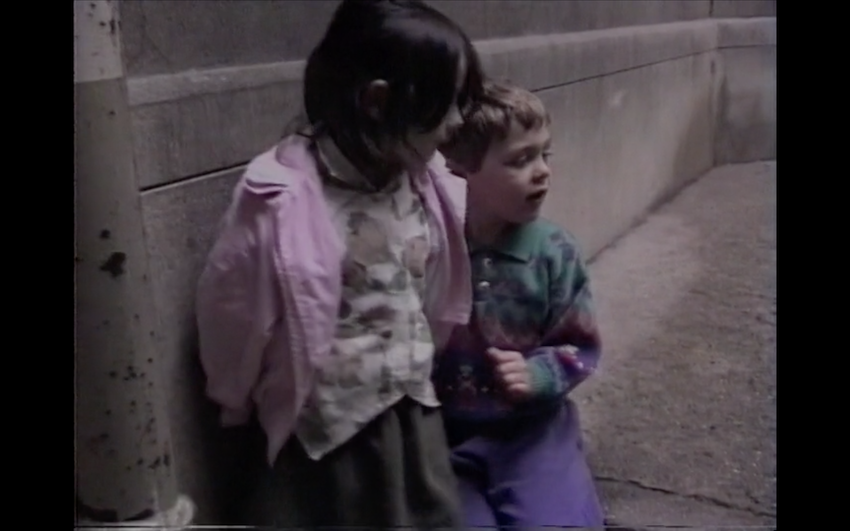
No excerto de Recréations, a realizadora é uma observadora que se mantém no exterior, sem criar relação directa, sem intervir. A câmara centra-se num miúdo – senão seria caótico, tentar seguir todo o recreio – e é uma câmara móvel, ocupada em acompanhar os movimentos do miúdo, é uma câmara solta que faz com que o espectador fique imerso. O miúdo nunca olha para a câmara, a miúda sim, mas isso não parece fazer diferença.
In the excerpt from Recréations, the director is an observer who remains outside, without creating a direct relationship, without intervening. The camera focuses on one kid – otherwise it would be chaotic, trying to follow the whole playground – and it’s a mobile camera, busy following the kid’s movements, it’s a loose camera that immerses the viewer. The boy never looks at the camera, the girl does, but that doesn’t seem to make any difference.
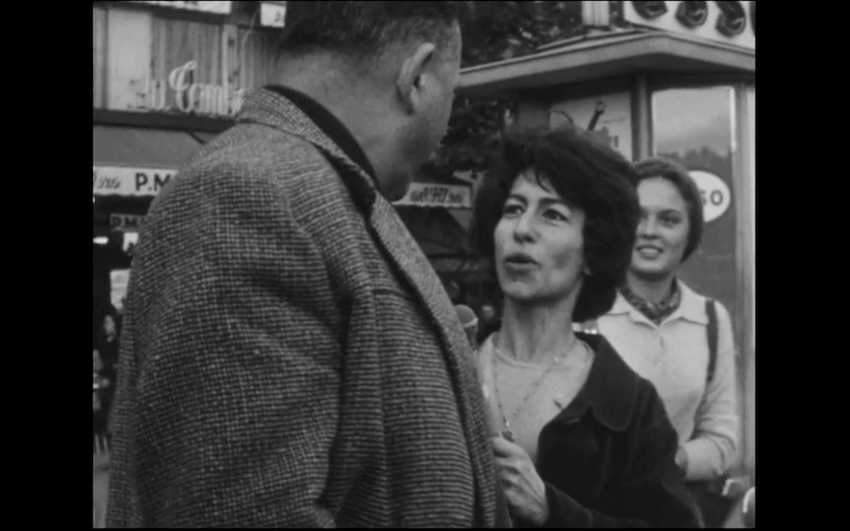
No excerto de Chronique d’un été faz-se um inquérito de uma pergunta só: é feliz? É uma pergunta simples, mas é uma pergunta enorme, de certa forma íntima, e é uma pergunta que feita assim de repente desarma as pessoas. A mesma pergunta que recebe diferentes respostas, ou diferente maneiras de responder ou de não responder. Quando as pessoas aceitam a pergunta o inquérito passa a conversa e as pessoas falam um pouco de si. A câmara é móvel, segue as entrevistadoras e a reacção dos entrevistados, são os dois centrais.
The excerpt from Chronique d’un été asks a single question: are you happy? It’s a simple question, but it’s a huge question, somewhat intimate, and it’s a question that suddenly disarms people. The same question receives different answers, or different ways of answering or not answering. When people accept the question, the survey turns into a conversation and people talk a bit about themselves. The camera is mobile, it follows the interviewers and the reaction of the interviewees.
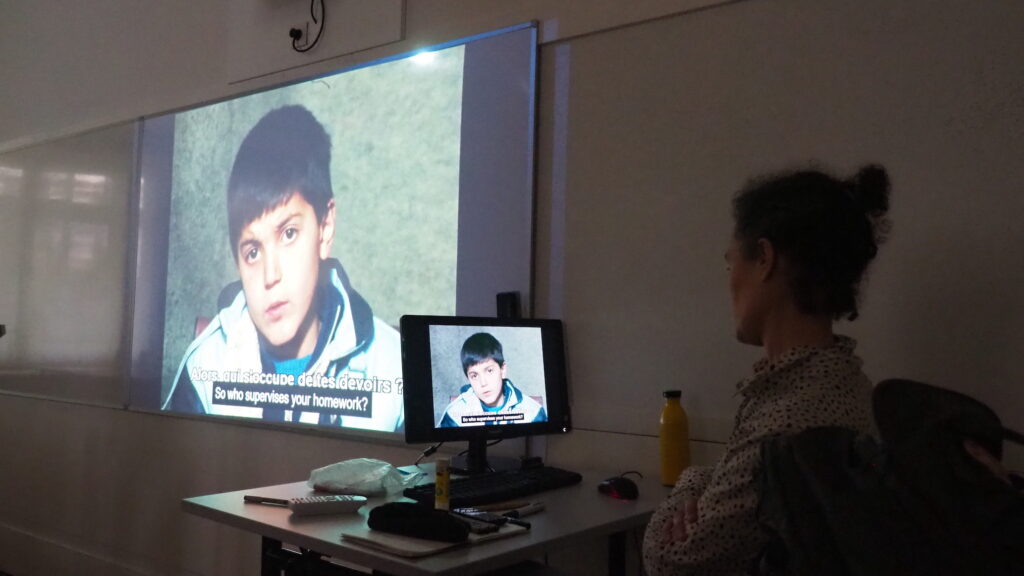
No excerto de Trabalhos de Casa o próprio dispositivo é filmado, a equipa tem um uma posição dominadora, o homem que faz as perguntas, de óculos escuros, sério, é uma figura de autoridade. As perguntas que faz são as perguntas que outras figuras de autoridade fariam: os pais, os professores. Todos os miúdos são filmados da mesma maneira, planos fixos, frontais, centrados no rosto, longos planos em que vemos o quão aflitos estão.
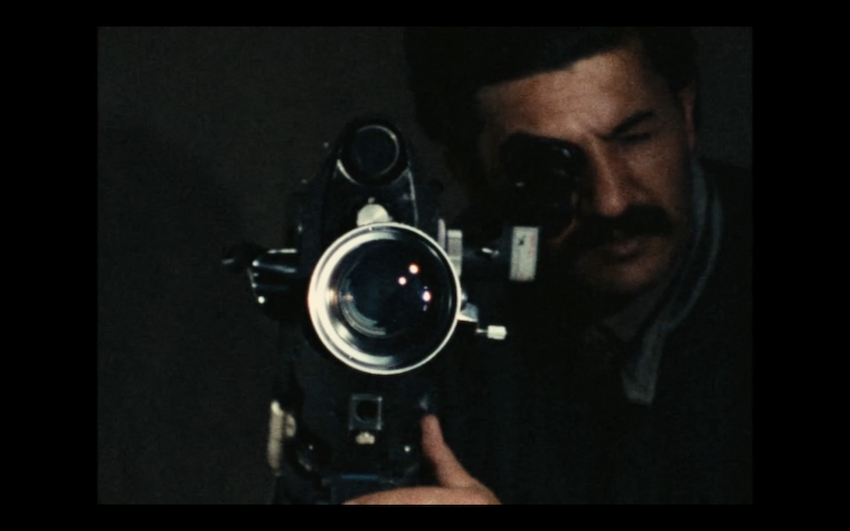


In the excerpt from Homework, the device itself is filmed, the team has a dominating position, the man asking the questions, wearing sunglasses, serious, is an authority figure. The questions he asks are the questions that other authority figures would ask: parents, teachers. All the children are filmed in the same way, fixed shots, frontal, centered on the face, long shots in which we see how distressed they are.
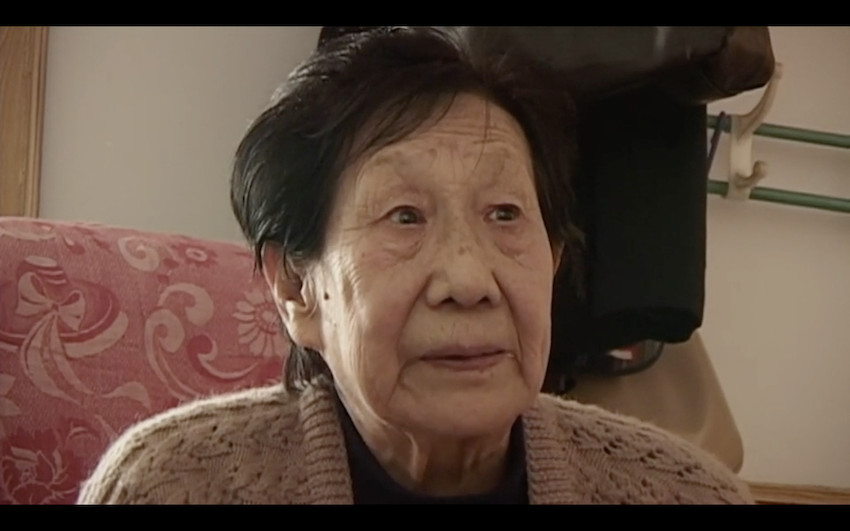
No excerto de Les Âmes Mortes, a primeira parte é uma entrevista, uma senhora fala para a câmara e conta a história do seu marido, a segunda parte não há palavras, apenas o som do vento e imagens de um zona deserta, não percebemos muito bem, e depois, ao mesmo tempo que quem está a filmar, parece, descobrimos ossos, e mais ossos, e mais ossos. De certa forma é a imagem para a história que a senhora contava, mas não se sabe o nome, os nomes, daqueles ossos e só nos resta um silêncio pesado, sem palavras.
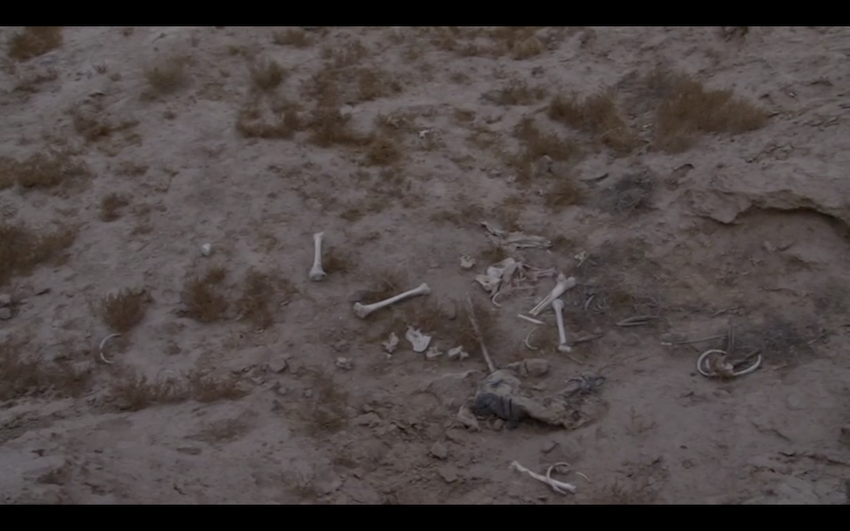
In the excerpt from Les Âmes Mortes, the first part is an interview, a lady speaks to the camera and tells the story of her husband, the second part there are no words, just the sound of the wind and images of a deserted area, we don’t understand very well, and then, at the same time as whoever is filming, it seems, we discover bones, and more bones, and more bones. In a way, it’s the image for the story the lady was telling, but we don’t know the name, the names, of those bones and all we’re left with is a heavy silence, without words.

No excerto de Lettres de Sibérie temos uma voz-off, a voz off faz-nos olhar para as imagens de determinada maneira, faz um comentário e além disso há uma música que marca uma determinada emoção e cria um ambiente – como no excerto de Terra sem pão de Buñuel. Mas Chris Marker está a mostrar-nos mesmo isso e por três vezes vemos as mesmas imagens, com a mesma montagem, mas cuja voz off e música muda, alterando muito o significado que damos àquelas imagens.
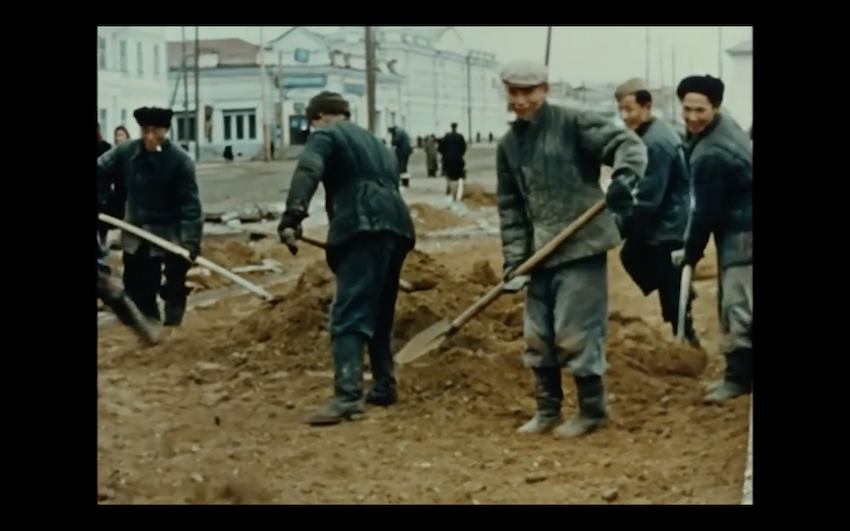
In the excerpt from Lettres de Sibérie we have a voice-over, the voice-over makes us look at the images in a certain way, it makes a comment and there is also music that sets a certain emotion and creates a mood – like in the excerpt from Buñuel’s Las Hurdes. But Chris Marker is showing us just that and three times we see the same images, with the same editing, but whose voice-over and music changes, greatly altering the meaning we give to those images.

No excerto do Terra sem pão, a voz off é um texto escrito, lido com um certo tom, sublinhado pela música. É tudo triste. A voz off diz as razões do que estamos a ver, as imagens são-nos apresentadas através do que é dito, nós estamos de fora.
In the excerpt from Las Hurdes, the voiceover is a written text, read with a certain tone, underlined by the music. It’s all sad. The voiceover tells us the reasons for what we are seeing, the images are presented to us through what is said, we are on the outside.
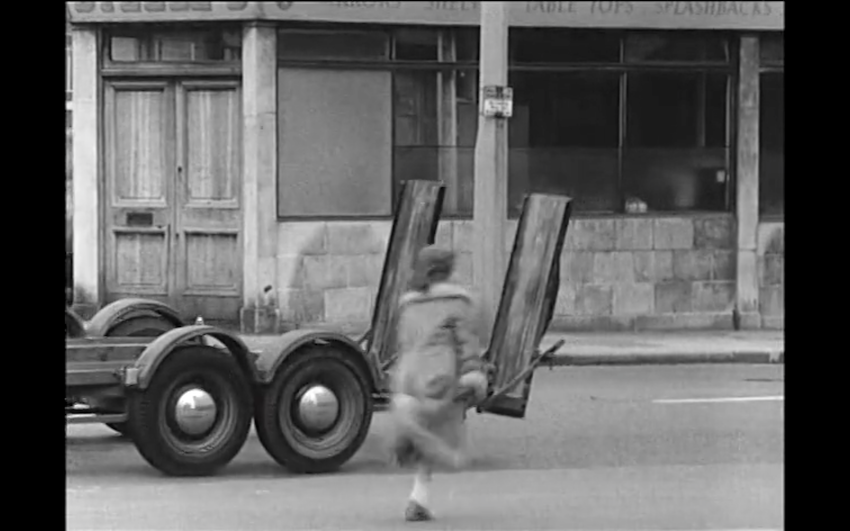
Tanto num excerto como noutro as voz off foram escritas após a montagem, para a montagem.
(A este propósito vimos um excerto de The girl chewing gum de John Smith que brinca com isto: a voz off parece que é a voz fora de campo de um realizador que via dando indicações ao que se passa dentro de campo. É muito engraçado.)

In both excerpts, the voice-overs were written after the editing, for the editing. (In this regard, we saw an excerpt from The girl chewing gum by John Smith which plays with this: the voiceover seems to be the off-field voice of a director who is giving directions to what is happening on the pitch. Very funny.)
